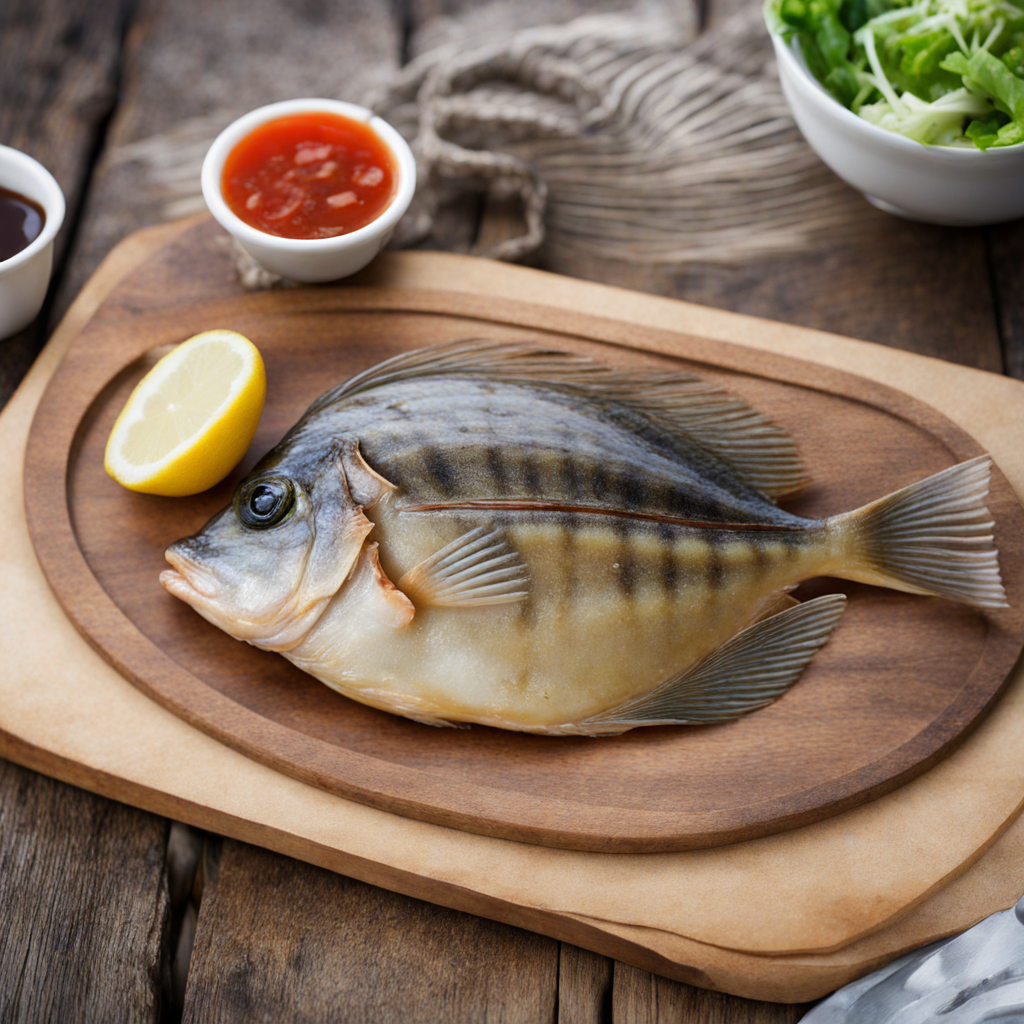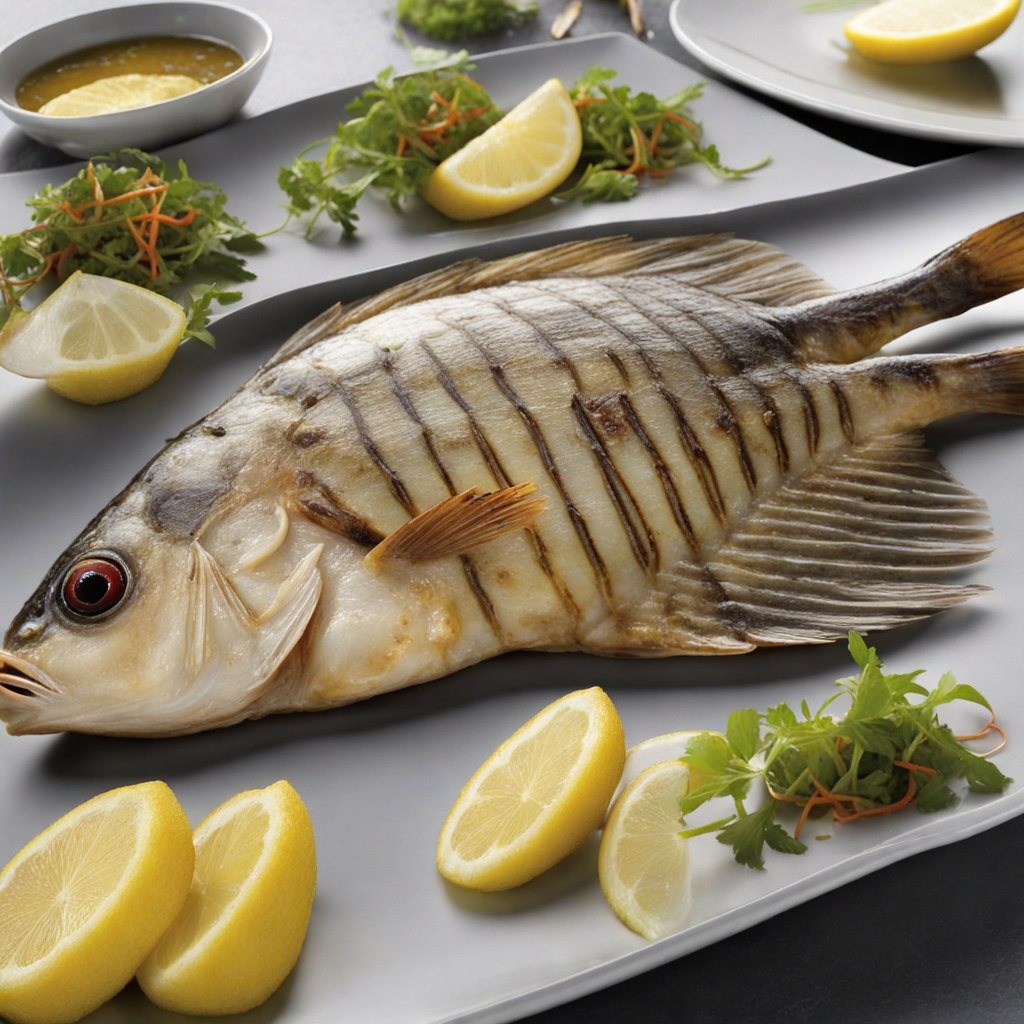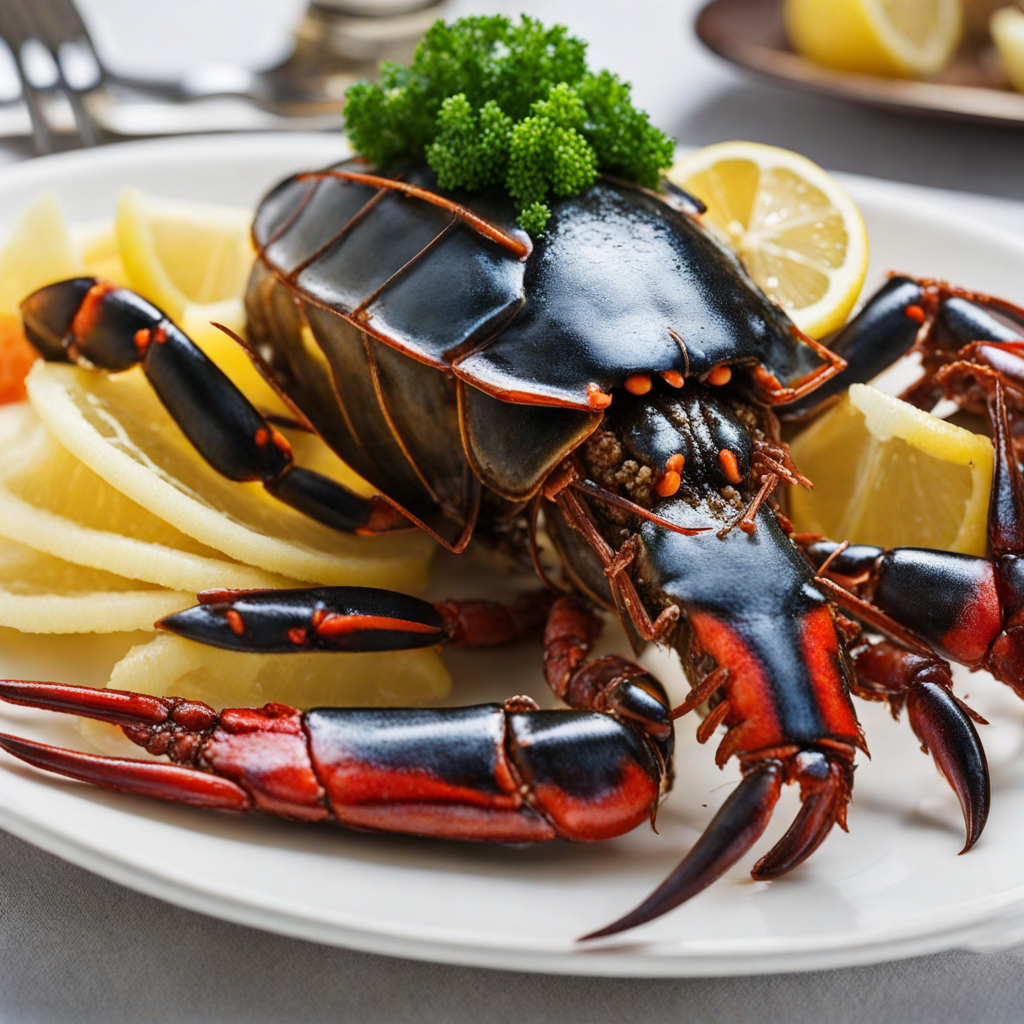John Dory
John Dory, known scientifically as Zeus faber, is a flat fish that has gained a reputation for its delicate flavor and appealing texture. This fish is indigenous to the warm coastal waters of Australia, as well as other parts of the world, including the Mediterranean and the eastern Atlantic. The name "John Dory" is believed to have originated from the French word “dori,” which refers to the fish’s distinctive golden spot on each side, resembling a thumbprint. This intriguing name reflects the fish’s rich history and cultural significance in various culinary traditions. The flavor of John Dory is one of its most alluring characteristics. It possesses a mild, slightly sweet taste with a subtle brininess, making it highly versatile in the kitchen. The flesh is firm yet flaky, offering a buttery mouthfeel that is both satisfying and easy to prepare. Its unique flavor profile allows it to pair well with a variety of ingredients, ranging from simple herbs and citrus to richer components like cream and butter. Preparation of John Dory can vary depending on culinary preferences and regional influences. Commonly, it is pan-seared, grilled, or baked to highlight its natural flavors. The skin, which is often left on during cooking, adds an extra layer of texture and can become beautifully crisp when cooked properly. Many chefs recommend using minimal seasoning to allow the fish’s inherent qualities to shine. A drizzle of olive oil, a sprinkle of sea salt, and a squeeze of lemon are often all that is needed to elevate
How It Became This Dish
The History of John Dory: An Australian Culinary Delight Introduction John Dory, a fish celebrated for its delicate flavor and striking appearance, has become a staple in Australian cuisine. Its name evokes images of coastal waters and gourmet dining, but the history of this fish is as rich and layered as its taste. From its origins in the ocean to its place on the plates of modern Australian restaurants, the story of John Dory is intertwined with cultural significance, culinary evolution, and a deep connection to the sea. Origins and Etymology The John Dory, scientifically known as *Zeus faber*, is a species of fish found in warm waters around the world, particularly in the Atlantic and Indian Oceans. The name "Dory" is believed to have derived from the Greek word "dory," meaning "a spear," likely referencing the fish's elongated body and dorsal fin that resembles a spear. The "John" in John Dory is less clear, with various theories suggesting it may refer to a local fisherman, a saint, or even a corruption of the French term "jaune doré," meaning "golden yellow," which describes the fish’s distinctive golden coloring. In Australia, the John Dory is predominantly found along the eastern and southern coasts. Its unique flat body, large eyes, and striking coloration make it visually appealing, but it is its sweet, mild flavor and firm, white flesh that have made it a sought-after catch for both commercial and recreational fishermen. Cultural Significance For Indigenous Australians, the relationship with the ocean and its bounty was not merely about sustenance; it was deeply intertwined with culture, spirituality, and identity. While there is no direct evidence of John Dory being specifically revered by Indigenous communities, fish, in general, held significant cultural importance. Fishing was often a communal activity, and the knowledge of fishing techniques and seasonal patterns was passed down through generations. The arrival of European settlers in the late 18th century began to alter the fishing practices and seafood preferences in Australia. John Dory gained prominence in the culinary world during the 19th century, especially as Australia began to develop its own distinct identity separate from British influences. The fish was often featured in early Australian cookbooks, which showcased recipes that reflected both local ingredients and European techniques. The combination of Indigenous knowledge and European culinary traditions laid the groundwork for what would eventually become a unique Australian cuisine. Development Over Time By the mid-20th century, the popularity of John Dory soared, particularly in urban centers like Sydney and Melbourne, where seafood restaurants began to flourish. Chefs experimented with various cooking methods—grilling, steaming, and pan-frying—highlighting the fish's versatility. The emergence of the "modern Australian" cuisine movement in the late 20th century further elevated John Dory's status. This culinary trend emphasized fresh, local ingredients and a fusion of flavors, marrying traditional Australian dishes with influences from Asian and Mediterranean cuisines. During this time, John Dory became a symbol of fine dining in Australia. Its delicate flavor made it a favorite among chefs, often paired with seasonal vegetables and sophisticated sauces. The fish was typically served whole, garnished with herbs and citrus, allowing diners to appreciate its beauty as much as its taste. The rise of food culture and a burgeoning interest in sustainable seafood practices led to an increase in awareness about the sourcing and fishing methods used for John Dory. Sustainability and Modern Culinary Practices As the demand for John Dory grew, so did concerns about overfishing and environmental impact. In response, Australian fisheries implemented more sustainable practices, including quotas and regulations to ensure the long-term health of fish populations. The Australian government and various organizations began promoting responsible fishing methods, encouraging consumers to choose sustainably sourced John Dory. This shift toward sustainability has also influenced culinary practices. Modern Australian chefs are now more conscious about sourcing their ingredients and often showcase John Dory as a sustainable choice on their menus. The fish is celebrated not only for its exquisite taste but also for its environmentally responsible sourcing. John Dory in Contemporary Cuisine Today, John Dory remains a beloved ingredient in Australian kitchens. Chefs continue to innovate, creating dishes that highlight its unique qualities. From simple preparations that emphasize the fish’s natural flavors, like a light lemon butter sauce, to more elaborate presentations that incorporate diverse culinary influences, John Dory is a versatile canvas for culinary creativity. In recent years, the fish has also found its way into home cooking, with many Australians experimenting with John Dory recipes that reflect both traditional and contemporary styles. Online platforms, cookbooks, and television cooking shows have contributed to a resurgence of interest in cooking with local seafood, and John Dory has enjoyed a prominent place in this narrative. Conclusion The journey of John Dory from ocean to plate encapsulates a broader story of Australia’s evolving culinary landscape. Its origins in ancient waters, cultural significance to Indigenous Australians, and adaptation to modern tastes reflect the dynamic relationship Australians have with their environment and food. As chefs and home cooks alike continue to embrace this exquisite fish, John Dory not only represents a delectable dining experience but also symbolizes the importance of sustainable practices and the celebration of local ingredients in Australian cuisine. In a world increasingly focused on sustainability and responsible sourcing, John Dory stands out as a testament to the harmonious balance between enjoying the fruits of the sea and respecting the ecosystems that provide them. As this culinary star continues to shine, it reminds us of the rich tapestry of history, culture, and gastronomy that defines Australia's food identity.
You may like
Discover local flavors from Australia







